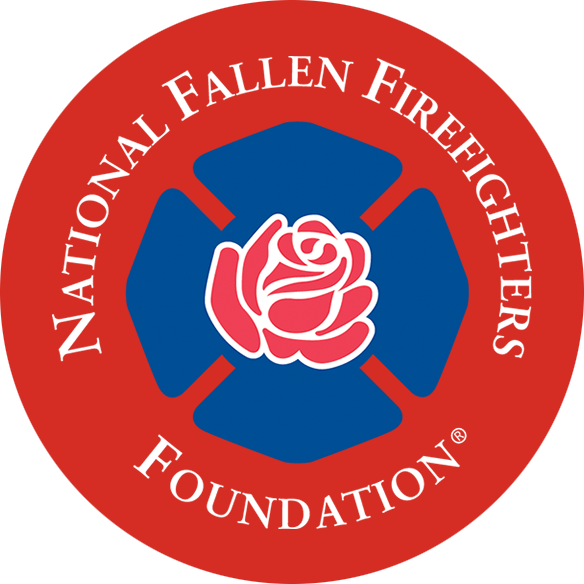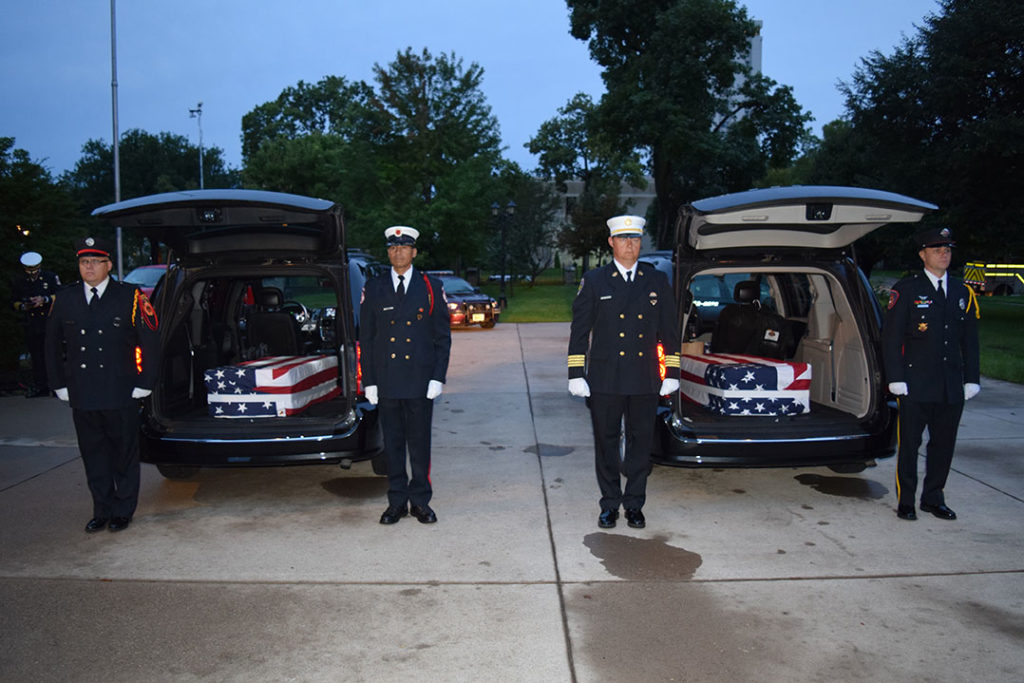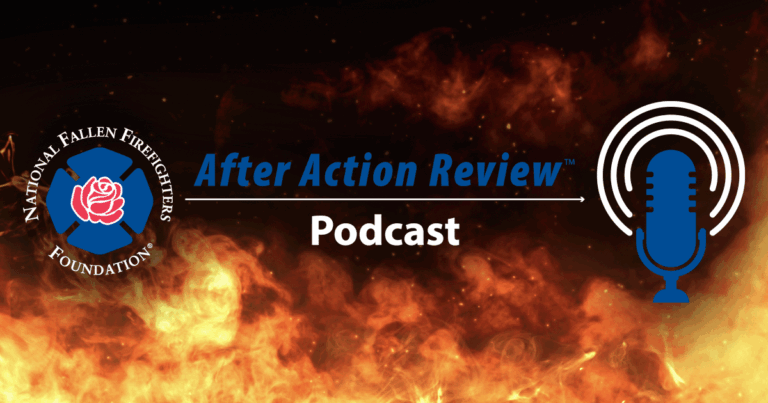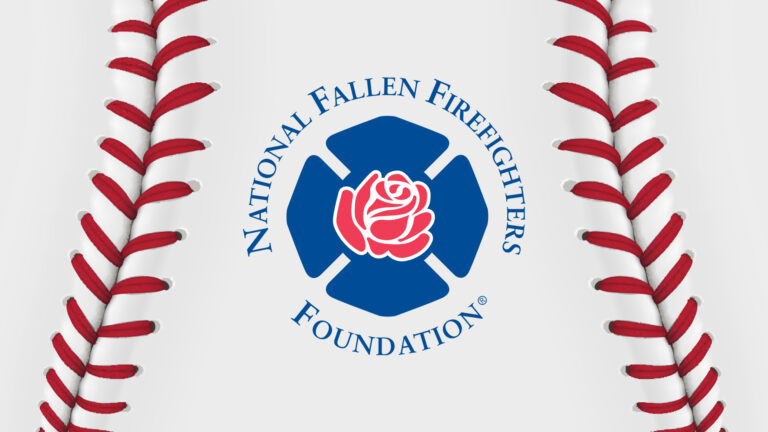By Ken Prillaman, Brooklyn Park Fire Chief and MN LAST Assistant Coordinator
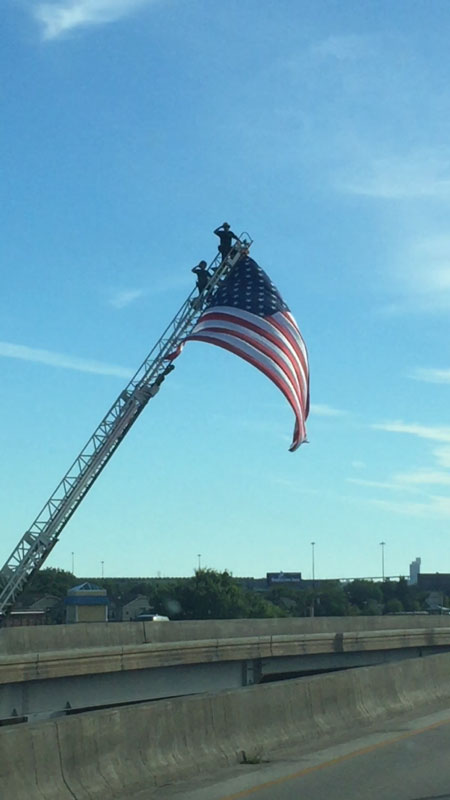
Saturday afternoon, August 27 a caravan of three vehicles traveled south along I35E toward Minneapolis. At approximately 3:30pm the driver of one of the vehicles lost control and hit the center divider. When Anoka County dispatch toned out the Spring Lake Park-Blaine-Mounds View (SBM) fire department no one would have imagined what they would find.
The caravan carried twenty-one members of the Beartown Firefighter crew out of Baraga Michigan; a top-notch wildfire crew with a great fireground reputation. They were bound for Utah to help with the Box Canyon Fire when tragedy struck. When SBM Operations Chief Dan Retka arrived on the scene he knew this was not just another freeway incident.
Before the evening ended two were dead, six were unconscious and in critical condition at two area hospitals. As evening approached I received a call telling me that two Michigan firefighters had perished and I immediately activated the team for a line-of-duty-death. At that moment it made no difference who they were or where they were from; all that mattered was that they were firefighters.
By 8:00pm the MN LAST had a command post established at Mercy Hospital and had begun to liaison with senior medical staff in both hospitals. MN LAST volunteers were assigned the task of sending out a region-wide notification that help was needed to stand watch at all six hospital rooms and at the county morgue. Within the hour, firefighters had taken up posts outside each room to begin a vigil that would rotate every four hours and would not end until all the firefighters were released or until their medical team upgraded their condition to stable. For a couple of them that wouldn’t happen for almost four days.
During the first hour of operations it was discovered that the Beartown firefighters were members of the Keweenaw Bay Indian Community. My first call was to Monte Fronk, the Emergency Manager for the Mille Lacs Band of the Ojibwa and requested that he start toward our command post and serve as the event Liaison Officer. My next call was to the Beartown Fire Chief to assure him and his staff that his crews were in good hands and preparations were being made for their arrival.
The Anoka County Medical Examiners office is a top-notch facility located about 15 miles from the MN LAST command post. Lying solemnly on stretchers were 25-year-old A. J. Swartz and 23-year-old Jimmy Shelifoe who had been riding in the back of the troop transport vehicle when the vehicle flipped and the crew compartment dislodged from its chassis.
Over the next fifteen hours the MN LAST would prepare for the arrival of nearly 50 Baraga Township fire department personnel, family members of the fallen and injured firefighters and members of the tribal council. By mid-day on Sunday resources from the MNICS organization and the Bureau of Indian Affairs (BIA) were enroute to the command post. Additional resources from the MN All Hazard Incident Management Team (MN AHIMT) assisted with planning and logistics. By Sunday evening the BIA had taken over as IC with the MN LAST focused on the hospital vigil and planning for the return of A.J. and Jimmy to their waiting families in Michigan.
Baraga Township is located in the upper peninsula of Michigan and reports a population of 3,815. The combination of its size and the close-knit nature of a Native American community meant that the entire community was immediately thrust into the tragedy of their loss with the uncertainty of what to do next.
As the sun rose on Monday, plans were being developed for transporting the bodies of A.J. and Jimmy home. Family wishes, Native American culture, Minnesota laws regarding autopsies and a Michigan community that wanted their sons back collided in a storm of issues and concerns. The MN LAST, MNICS and BIA had their hands full sorting through all of the issues that appeared to be standing between where we were and where we needed to be.
[cycloneslider id=”beartown”]
With no experience with a line-of-duty death nor any experience with firefighter funeral traditions, plans were unfolding that appeared to be headed toward a van that would carry the two firefighters home in the body bags that covered them at the medical examiner’s office. To their credit, MN LAST members Jerry Streich and John Cunningham said, “not on our watch.” We all instantly knew what we had to do. There was no option and there was no time. By Native American tradition funerals for these firefighters needed to be scheduled for Wednesday. It was already approaching noon on Monday.
With Monte’s help we laid out our plan to the tribal liaison who had arrived with the families the previous afternoon and with her blessing we began to plan for the longest line-of-duty-death processional in the history of the fire service; from Minneapolis to Baraga Township, 362 miles.
With a pair of matching, rented black Dodge Caravans and a nine-person Honor Guard we loaded AJ and Jimmy into transport cases and draped them with American flags. At 6:00am I arrived at the Thompson Dougherty Funeral Home in Minneapolis and stood in awe of two police officers who had been dispatched from the Keweenaw Indian Community the previous evening to escort us to Michigan. At 6:30am on Tuesday morning we loaded the two firefighters, one each into the vans and with our processional departed for the U.P.
About an hour north of Minneapolis we pulled into a rest area where the Beartown Fire Chief, family members, uninjured members of the Beartown crew and the tribal liaison waited for us. We left for Michigan with a total of 20 vehicles in our processional. A processional that would ultimately be three miles long by the time we pulled into Baraga Township.
Throughout our three state journey overpasses and sidewalks were lined with apparatus, firefighters and community members who had come out to pay their respect. I remember seeing a lone woman, in her twenties, along a desolate section of road through Wisconsin and thinking to myself “how did she even come to know that we would pass through here?”
The display was much like you would expect to see in a processional for a fallen firefighter. The surprise came from the fact that the display was in community after community after community all of the way to Baraga.
Upon our arrival at the edge of town in Baraga we stopped. We took a few minutes to straighten our uniforms, open the doors on the van and move any personal belongings out of sight. We could hear bagpipes in the distance. And as the community saw us round the corner, they saw their sons, draped in our nation’s colors, guarded by uniformed personnel being walked home their final mile.
I believe that we made the only right decision with regard to the handling of those fallen firefighters. I am expecting that the task we undertook and the manner in which we accomplished our mission, will not only have long lasting effects in Baraga but may redefine some of the national protocols for future LODD’s.
Our success was not measured by the manner in which we handed those bodies over to their families and community late Tuesday afternoon but rather by the totality of how Minnesota stepped up and took care of them, their injured crew members and their department and families from the moment of the first set of tones dispatched MN resources to the scene.
Personally, this became the most significant event in my fire service career thus far, an honor beyond words. The satisfaction of saying to the parents of those boys and their community leaders that we have safely and with honor and dignity returned your sons to you was a moment I will never forget.
